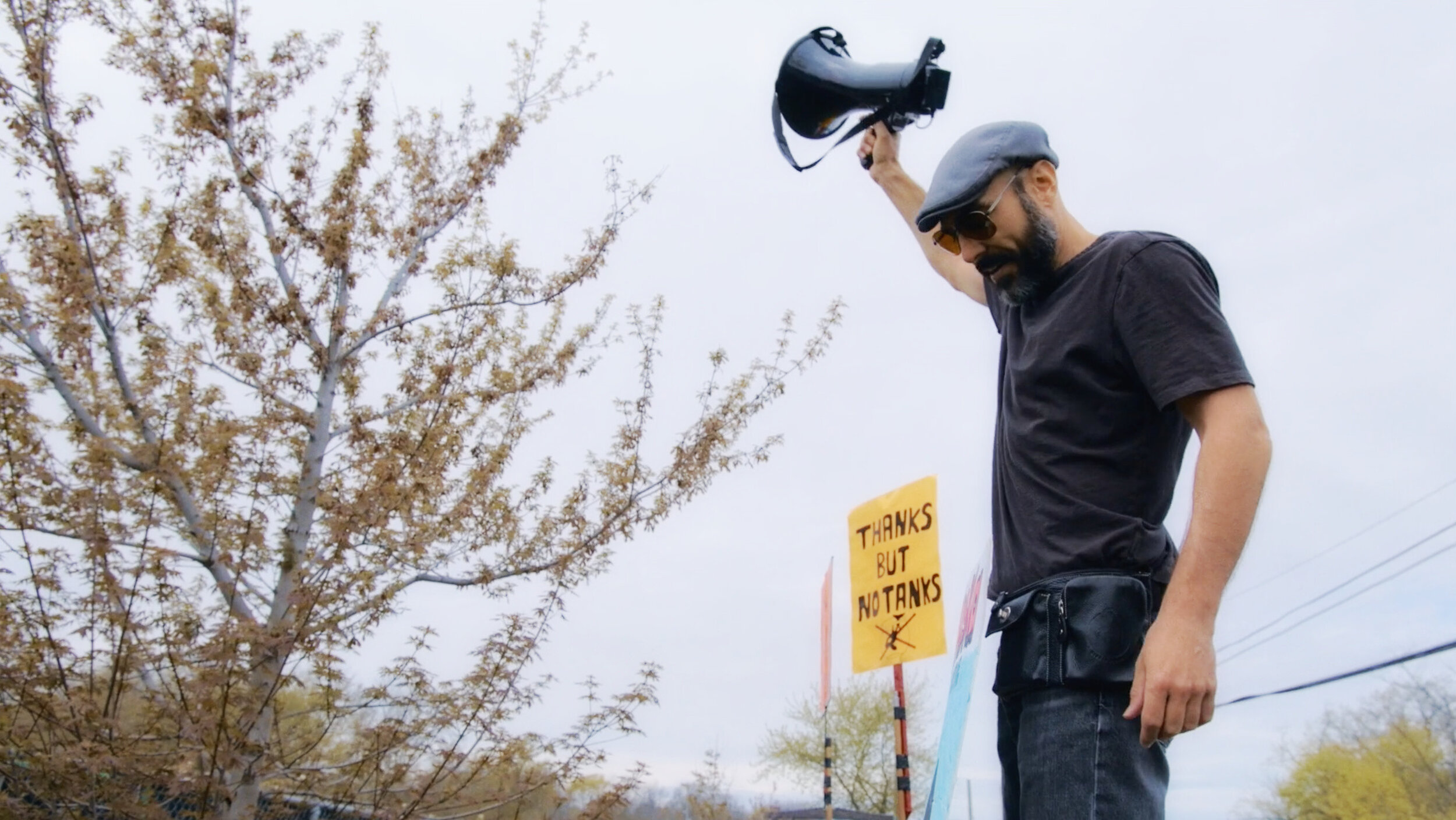The Walrus and The Whistleblower
Written and directed by Nathalie Bibeau
Featuring Phil Demers (as himself)
Running time: 1 hour and 29 minutes
Unrated with footage of animal abuse, tasteful human nudity
by Jenny Swadosh
“There comes a point where suddenly you used to make sense of things you can’t no more.” -- Phil Demers, The Walrus Whisperer
Some 30 years ago, after decades of working in road construction, my animal-loving dad submitted his name to help out at a local aquarium. He was invited to a behind-the-scenes orientation for incoming volunteers, where he was dismayed to discover that he shared a prescription with a Beluga whale or a porpoise (I can no longer recall which). The medication was for ulcers. When he inquired further, he was devastated to learn that the aquarium’s marine mammals found performing in shows and aquarium life in general stressful. Ulcers aren’t caused by stress though; stress exacerbates ulcers. Taking other medications, particularly pain relievers, are major causes of ulcers. Dad never returned to the aquarium as a volunteer. This experience profoundly changed our view of aquariums and the animals who involuntarily live in them. So I approached The Walrus and the Whistleblower with a particular viewpoint.
Phil Demers, the human protagonist of The Walrus and the Whistleblower, resigned from his job as a trainer at Marineland after witnessing animals suffer chlorine burns and his calls to move the suffering animals to untreated water went unheeded by the theme park’s leadership. Demers considers himself the mother of a walrus named Smooshi, which sounds far out until you learn how Smooshi probably ended up in Niagara Falls, Ontario. Captured in Russia and separated from her biological walrus mother (who may have been slaughtered in the process) while still nursing, Smooshi imprinted on Phil in a matter of seconds, a process that cannot be undone. Phil weaned Smooshi and taught her how to eat fish. Now the subject of a $1.5 million whistleblower lawsuit brought by Marineland’s owners, Phil cannot visit his baby, who lives 1 kilometer away. The Walrus and the Whistleblower is the story of how this tragic situation came to pass.
Director Nathalie Bibeau has crafted an intense psychological portrait of her childhood friend Demers as he struggles to liberate Smooshi from Marineland, while understanding both the punitive legal proceedings against him and the mechanics of a Canadian bill that will outlaw keeping certain marine mammals in captivity. The documentary draws upon a wealth of archival news footage, home movies, photographs, Demer’s Twitter account, courtroom sketches and incisive interviews with local journalists, former Niagara Falls politicians, animal welfare activists, ex-Marineland trainers and some very raw footage of Demer’s himself, who struggles with anger and depression as he discovers walrus deaths at the fifty-year-old attraction and fears for Smooshi’s life.
While the documentary narrative solidly centers on Demers and his unrelenting quest to rescue Smooshi while staving off bankruptcy and psychological breakdown, Bibeau weaves into this personal story the larger context of shifting public perceptions surrounding animal captivity and the economic and cultural environment in which this drama plays itself out. As biologist Naomi Rose observes, our relationship with animals has changed since the mid-20th century when Marineland was established and places like Marineland have “lost control of the narrative.” But not enough for an unambiguously happy ending to the walrus saga.
There are obvious comparisons to be made with the 2013 documentary Blackfish, which ended up being a public relations nightmare for SeaWorld, but what I found most compelling about The Walrus and the Whistleblower is Phil Demers and his world. The smallness of this documentary set right with me. Demers, who identifies as French Canadian, started working at Marineland in 2000, when he was 22 years old. Neither he nor the many other former trainers who reported animal abuse appear to have had sustained educational preparation in caring for marine mammals. Nor, in fact, did the owner of Marineland, John Holer, who was allegedly a circus animal trainer at some point prior to his arrival in Canada. In reprisal for their whistleblowing, Holer and his wife Marie, pursued crushing lawsuits against former Marineland employees, including Demer’s partner Christine (Christine reached a settlement with Marineland, which makes for some tense domestic scenes, as I assume she signed a non-disclosure agreement). All of this transpires in the insular, economically struggling community of Niagara Falls and neighboring Chippewa, situated across the Niagara River and short drive from Buffalo. While Demers travels to Ottawa to testify on behalf of Canadian Parliament Bill S203, The Walrus and the Whistleblower is essentially a small-town drama.
After writing the above, I woke up the next morning thinking about the 1984 Vietnam War drama Birdy, the story of two childhood friends psychologically impaired by their military service. In trying to figure out why my sleeping brain did that, I realized that the sense of deja vu I experienced watching The Walrus and the Whistleblower came from documentaries about the effects of military atrocities against civilians, specifically effects on the young soldiers who carried out their superiors’ orders against their moral judgment. Phil and his fellow ex-trainers fit this profile of young people harmed in the line of duty and trying to make sense of their service, although in this case they innocently signed up for jobs in an institution that harms animals rather than non-combatants. Ultimately, The Walrus and the Whistleblower is about the burdens imposed on us by amoral systems, how we respond to those burdens, and what that does to us as humans.
A word of viewer caution: There are several clips in the documentary that chronicle sick, injured, dying and distressed animals, as well as one scene that appears to depict a dolphin being forcibly fed while restrained. Interview subjects also graphically describe events in which animals were physically harmed.
The Walrus and the Whistleblower opens on demand November 24.


